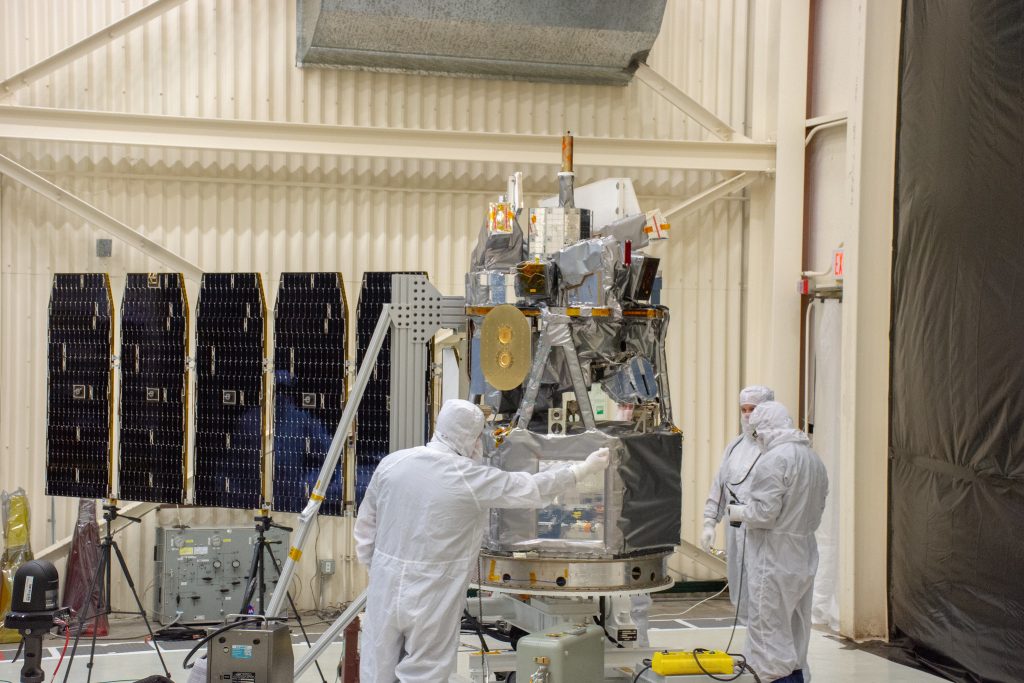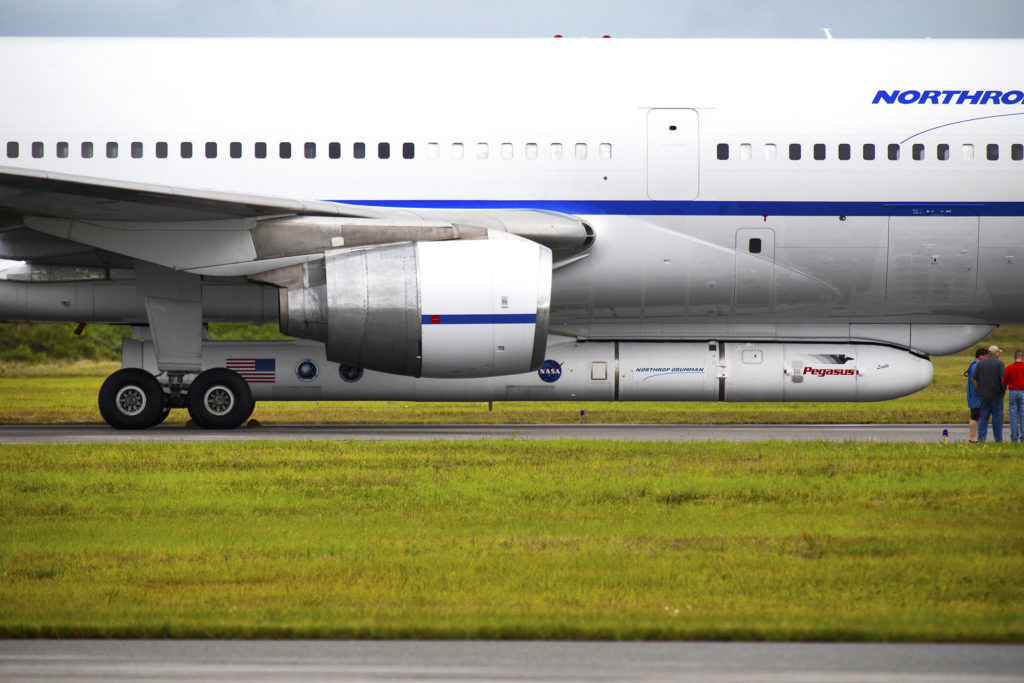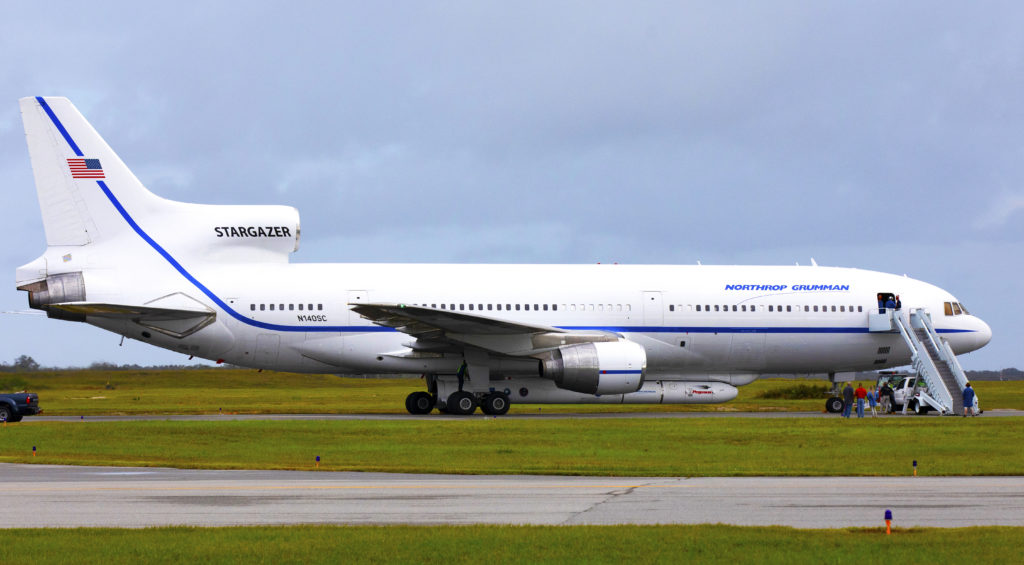
NASA and Northrop Grumman currently are preparing the agency’s Ionospheric Connection Explorer, or ICON, spacecraft and the Pegasus XL rocket at Vandenberg Air Force Base in California for ferry to the Cape Canaveral Air Force Station in Florida by the L-1011 Stargazer aircraft on Oct. 1, 2019.
The launch has been rescheduled to Oct. 10, 2019, following the completion of a joint NASA/Northrop Grumman investigation into a Pegasus sensor reading that was not within normal limits during previous ferry and launch attempt flights. The cause of the issue is understood, and the flight hardware has been modified to address the issue.
Two L-1011 flights with Pegasus were conducted to verify the effectiveness of the modification with no issues. Functional tests are being performed on NASA’s ICON spacecraft, which utilizes Northrop Grumman’s LEOStar-2 platform, to ensure that the ICON spacecraft is ready for the upcoming integration activity, ferry flight and launch. As always, mission success for Pegasus and ICON is the top priority.







